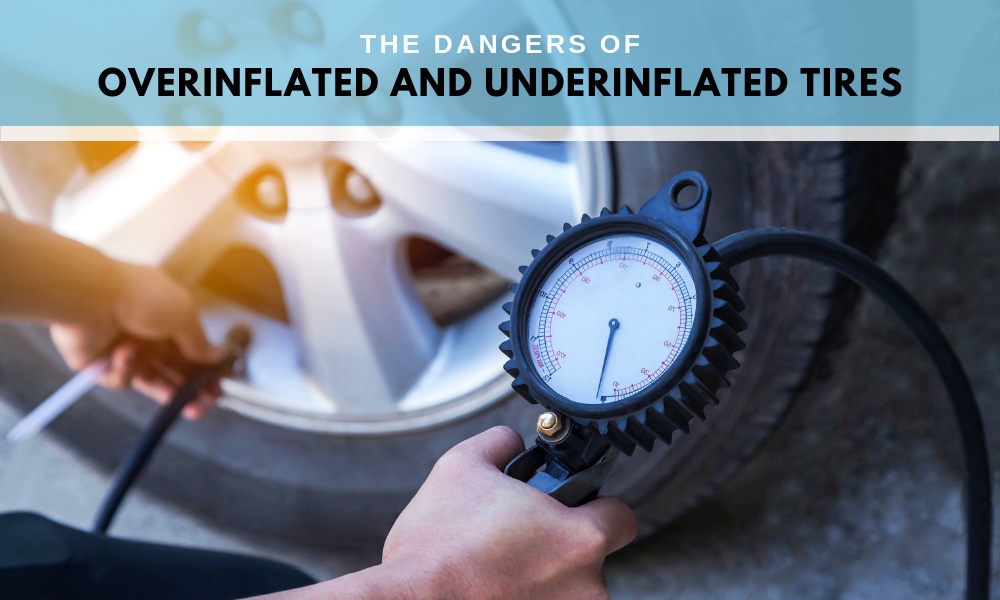
We’ve talked before about the importance your wheels have in determining the safety and performance of your vehicle. One thing we’ve yet to discuss, however—and what we’ll delve into today—is the inflation of your tires. Many of us understand the importance of preventing underinflation, though we may not necessarily know the exact reasons why. Another thing we may not realize is that you can also overinflate your tires. Maintaining proper tire pressure is integral to optimizing your car’s performance and preventing future unwanted repair costs. Learn more to understand the dangers of overinflated and underinflated tires.
Overinflation
There are a few things that could go amiss if your tires possess too much air, all of them affecting the overall performance of your car. One is that the extra pressure applied to the walls of your tires can make them too stiff and affect the performance and comfort level of your car. They can also create unnecessary noise.
Heavy distribution of air can also cause uneven tire wear. It will direct your tire’s balance toward the center of your car, causing the middle of your tire to wear first. It can be dangerous if your tire has lifted sidewalls because they play an integral role in supporting your car. They also absorb any shocks that your car retains from unsavory road conditions. Filling your tires to the correct PSI will avoid any unnecessary overinflated tire wear on your wheels.
Underinflation
Underinflated tire wear can be an issue, too. An underinflated tire can cause its tread life to reduce by 25%, requiring you to replace it sooner than you would have otherwise had to. This is an unwanted, as well as potentially expensive, repair. On a more dangerous note, the friction caused by the tread’s increased relation to the ground can lead to blowouts. A tire is even more susceptible to damage caused by a pothole or other potentially detrimental road conditions.
When a tire is underinflated, this leads to problems that affect more than just the tires. Driving on a low tire can also cause the rims to become damaged. Even Hyundai Sonata rims, which can hold up against a lot of damage, aren’t immune to the effects of a near-flat tire. There is one last thing to consider—unlike an overinflated tire that causes weight distribution to the center of the wheel, an underinflated tire causes the wheel’s edges to bend out. This will cause the wheel to become overheated while you drive, which can have an impact on fuel efficiency.
Hopefully, the above points have convinced you to take the proper care in maintaining the air pressure of your tire. You should check it monthly to ensure that it’s where it should be, especially as extreme heat and cold can affect the air levels. Instructions for the proper PSI for your tires should be on the inside of your passenger door. Additionally, you can purchase an air gauge for only a few dollars to keep inside your vehicle to ensure you aren’t driving on either overinflated or underinflated tires.
